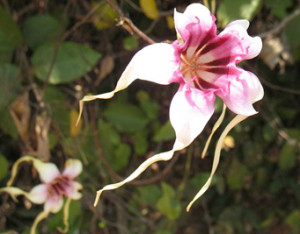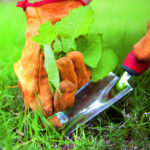 Co możecie powiedzieć o roślinach wieloletnich?
Co możecie powiedzieć o roślinach wieloletnich?
Termin wieloletnie rośliny jest bardzo szeroki i obejmuje wszystkie rośliny, które żyją dłużej niż trzy sezony. Należą do nich drzewa, krzewy, rośliny, które nie są ziołami, jak i zioła, a w szerszym ujęciu także rośliny cebulowe i inne, które pod ziemią mają organy służące do odnawiania. W domu możemy uprawiać rośliny ze wszystkich tych grup. Jednak wiele osób ma problemy z określeniem, które rośliny warto przechowywać przez wiele sezonów. Poza tym zamieszanie powoduje fakt, że część roślin sprzedawanych jako wieloletnie, ze względów praktycznych, traktuje się jako jednoroczne.
Drzewa
Drzewa definiujemy ny, z wyraźnie wyodrębnionym pniem. Niektóre z nich we wczesnej fazie rozwoju hodowane są jako rośliny domowe, gdyż większość jest wrażliwa na mróz. Zbyt wyrośnięte okazy są usuwane, przenoszone do obszerniejszych pomieszczeń lub przycinane do podstawy, by mogły wypuścić z korzeni nowe pędy, Do takich roślin należą akacja, jodełka pokojowa, cytrusy, figowiec sprężysty, grewilla mocna, szeflera parasolowata. Większość z tych roślin po mocnym przycięciu wypuszcza nowe pędy, oczywiście pod warunkiem, że zachowujemy odpowiednie warunki uprawy. Nowy przyrost przerzedzamy, żeby roślinie nadać ładne, krzewiaste proporcje.
Krzewy
Krzewy są zdrewniałymi roślinami, z wieloma pędami, które wyrastają od podstawy. Wiele krzewów świetnie nadaje się do uprawy w szklarniach, ale są raczej zbyt szerokie do większości pomieszczeń w domu. Wiele odmian wygląda bardzo dekoracyjnie ze względu na kwiaty i liście. Niektóre uprawiamy tylko dlatego, że dobrze się prezentują w okresie kwitnienia. Jeśli mamy niewiele miejsca, wybieramy te rośliny, które ładnie wyglądają przez cały rok, a nie te, które trzeba długo pielęgnować i kwitną tylko przez miesiąc. Są to: zaślaz, pokrzywiec, kamelia, cissus, bieluń, niektóre fuksje, hibiskus, medinilla, pospornica, Plumbago i niektóre różaneczniki. Takie rośliny, jak kamelia, zaślaz czy bugenwilla można uprawiać przy ścianie, która daje im oparcie.
Zrzucające liście czy wiecznie zielone?
Wiecznie zielone drzewa i krzewy rozwijają się przez cały rok. Dlatego trzeba zapewnić im odpowiednie warunki uprawy i nie pobudzać do aktywnego wzrostu w zimie, zanim temperatura oraz światło nie będą dla nich już odpowiednie. Najlepiej zmniejszyć ilość podawanej wody i obniżyć temperaturę tak, aby zredukować rozwój w sezonie zimowym. Wiele z roślin, które kwitną zimą, także woli chłodniejsze warunki uprawy. Drzewa i krzewy, które zrzucają liście, potrzebują okresu zimowego spoczynku, a do wiosny powinny być utrzymywane w ledwie wilgotnym podłożu. Nagie gałęzie nie są zbyt dekoracyjne, dlatego większość domowych roślin powinna być wiecznie zielona. Jednakże rośliny zrzucające liście mają bardziej dekoracyjne kwiaty, dlatego warto uprawiać oba rodzaje.
Pielęgnacja w lecie
Wielu zdrewniałym roślinom dobrze zrobi, gdy w ciepłe miesiące zostaną wystawione na zewnątrz domu.
Inne rośliny wieloletnie
Do tej grupy należy wiele roślin, które często tworzą trzon domowych kolekcji. Choć według botanicznej klasyfikacji wszystkie należą do zielnych, to tylko niewiele popularnych domowych roślin rzeczywiście można zaliczyć do tej grupy, gdyż większość zachowuje swą zieloną część przez cały rok, a rośliny zielne obumierają z końcem sezonu aż do korzeni. Jest to grupa, do której należy mnóstwo roślin domowych, takich jak monstera, trzykrotka, paprocie, solejrolia i cibora. Większość gatunków z tej grupy toleruje zdecydowane przycinanie, o ile zapewniamy roślinie odpowiednie warunki.
Rośliny wieloletnie traktowane jako jednoroczne
Grupa ta zawiera wieloletnie rośliny, które kwitną w pierwszym sezonie po rozmnożeniu. Dla hodowców bardziej opłacalna jest właśnie uprawa tych roślin co roku, niż przechowywanie ich z sezonu na sezon. Przezimowanie roślin w osłoniętym miejscu jest kosztowne, a przy tym okazy uprawiane co roku od nowa są lepszej jakości. Wiele innych roślin wieloletnich przeznaczonych do kwitnienia poza sezonem, wymaga takich warunków uprawy, które ciężko zapewnić w domu podczas ciemnych, zimowych miesięcy. Rośliny, takie jak poinsecja, doniczkowe chryzantemy i odmiany starca bardzo często po przekwitnięciu są wyrzucane.
Rośliny cebulowe i rośliny z organami przetrwalnymi.
Wiele roślin cebulowych sprzedawanych jest jako rośliny domowe tuż przed rozpoczęciem kwitnienia. Po przekwitnięciu, gdy całe cebulki, a nie tylko ich korzenie są uprawiane w kompoście i nawożone podczas wzrostu, większość z nich można wysuszyć i uśpić, a w następnym roku znów posadzić. Fiołek alpejski i syningia to dwa popularne kwiaty, które można potraktować w podobny sposób.
Pielęgnacja i leczenie
Jednym z największych problemów podczas pielęgnacji roślin w domu jest odpowiednia ilość światła. Jeśli mamy do dyspozycji zabezpieczoną przed mrozem, całoroczną szklarnię, mocno osłabione okazy roślin można mocno przyciąć, przesadzić i uprawiać od początku w szklarniowych warunkach.








